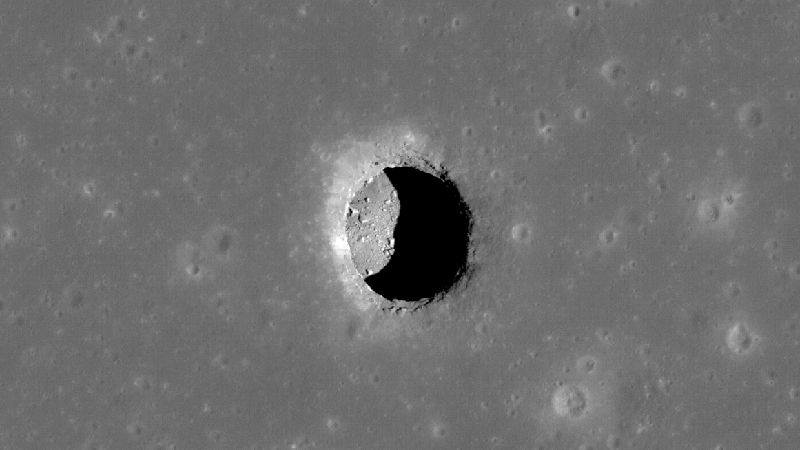
The moon’s strange warm pits may be the most pleasant place for astronauts (Image Credit: Space.com)
The moon’s surface is pockmarked with hundreds of little pits, each about the size of a large building, and it may not be just the pits’ size that would feel familiar to an astronaut.
Now, scientists have measured the temperature inside one of those pits at a temperate 63 degrees Fahrenheit (17 degrees Celsius). The mild conditions are a sign that such pits, which can be up to 490 feet (150 meters) across, could offer future astronauts and moon-dwellers shelter from the extreme conditions on the moon‘s surface.
Using the Lunar Reconnaissance Orbiter‘s Diviner experiment, scientists took temperature readings inside of one pit located in the Mare Tranquillitatis, the dark volcanic floodplain where Apollo 11 landed in 1969. The researchers found that not only was the pit temperate, but conditions also remained steady through the lunar day, which lasts about two Earth weeks.
“Knowing that they create a stable thermal environment helps us paint a picture of these unique lunar features and the prospect of one day exploring them,” Noah Petro, the orbiter’s project scientist at NASA’s Goddard Space Flight Center, said in a statement.
Related: The moon dazzles in photo from International Space Station
Since Japan‘s SELENE (Kaguya) orbiter first discovered one of these pits in 2009, scientists have pinpointed more than 200 of them. Scientists aren’t certain how every pit formed, but they believe at least some lead into lava tubes: long, snaking caverns formed by tendrils of flowing lava eating away at rock.
Some pits have visible rock overhangs that hint at caves below. Indeed, when these researchers compared their readings with computational simulations of temperatures in the particular pit they studied, the results were compatible with the existence of a cave.
If these pits are entrances into lava tubes, that’s a promising sign for would-be lunar explorers. Some researchers are planning for a future where humans visit and even live in the moon’s lava tubes.
There, underground, astronauts would have shelter from the extreme temperature swings, radiation and micrometeorites that batter everything on the lunar surface.
The researchers published the work in the journal Geophysical Research Letters on July 8.
Follow us on Twitter @Spacedotcom and on Facebook.





